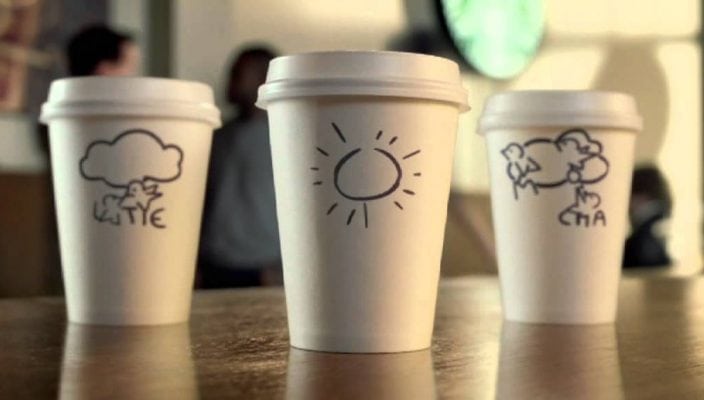Outcome economy set to drive new forms of product innovation
Nov 30, 2018 • Features • Aftermarket • Future of FIeld Service • Mark Brewer • IFS
This year's Aftermarket Business Platform was once again a hive of information as senior leaders from across the European continent and beyond came together to share their insight, learn from their peers and see first hand the technology that is shaping the sector. The conference was packed with the leading thinkers within the industry from both the practitioner and solution provider side including regular fieldservicenews.com columnist Mark Brewer who spoke with Coppperberg's Mark McCord...
The schedule for Aftermarket 2019 is already being put together and it promises to be a key date in the calendar once again. This is an event that almost always sells out so head over to aftermarketeurope.com now and secure your place at this important industry event...
In an outcome-based economy, the customer’s experience becomes the focus of the production process. But if a new product can achieve the same experience as an older model, where does that leave innovation?
According to IFS global industry director for service management Mark Brewer, innovation becomes even more essential, even if it’s driven in different ways.
“Rather than restricting innovation, the manufacturer is induced to continually reflect on how the product is behaving in the field,” Brewer explains on the sideline of Aftermarket 2018. “A combination of both consumers and industry are driving innovation. Organisations are being flexible to adapt to the expectations of millennials, generation X and so forth.”
Brewer has spent his 20-plus year career in presales, product management, business development marketing and he crisscrosses the world representing IFS at trade shows and winning business for the Sweden-based software developer.
"Rather than restricting innovation, the manufacturer is induced to continually reflect on how the product is behaving in the field..."
While the service industry is undergoing a transformation that’s putting the focus on experiences and outcomes rather than product manufacturing, Brewer says innovation will come in the form of better, more cost-effective, ways to provide those experiences.
Earlier, he explained the concept to dozens of delegates at the Berlin event using the example of Philips. The Dutch electrical giant used to sell tens of thousands of light bulbs to Amsterdam’s Schiphol Airport. Now, he explained, it no longer sells bulbs – instead, it provides a contract that will ensure the facility’s lights never go out.
“When you take ownership of the outcome, sure it turns the model on its head but in that example, they want to minimise the amount of product they shift because it’s all coming off the profit margin of their contract,” he explains.
“Likewise they are going to great lengths to optimise the number of visits they make — so they intelligently combine visits. If they’re going to do an overhaul of certain sections of the airport, they pull all the near-term jobs into the same routine and send one team in one hit. It’s a win-win because the customer doesn’t want engineers swapping things out every day.”
In his presentation, Brewer said research showed companies could earn $12 in product servicing contracts for every $1 earned in product sales. BMW, he pointed out, earned 12% margins on the sale of each car but 65% on provision of services for each of those cars.
“Service traditionally has been underinvested,” he told delegates. “That golden goose hasn’t been mined very well – but that’s changing.”
Driving that change is technology, he explains later. “Digital twinning”, in which manufacturers track the performance and condition of their products in the field via inbuilt monitors, has the potential to revolutionise the service industry.
"For the first time, the customer is no longer the sensor - the machine is the sensor now..."
“For the first time, the customer is no longer the sensor to say, for instance, that an elevator is broken; the machine is the sensor now,” Brewer says. “When a company sends a product out they never lose sight of it.
“With IoT and the leveraging of all their product information in the form of CAD, they can see how their products are performing. More interestingly, they can see the features that customers are using and not using. In that way they can see where they’ve over-engineered the product and can defeature to reduce costs by taking things away.”
The end result is innovation targeted at creating better customer experiences. More and more, that will come in the form of software upgrades.
“It doesn’t mean we have to reflect hardware changes to reflect innovation and change,” he explains. “The Tesla gets its upgrade at the click of a button and GE today employs more software engineers than hardware engineers.”
Be social and share...




















 Field Service News is published by 1927 Media Ltd, an independent publisher whose sole focus is on the field service sector. As such our entire resources are focused on helping drive the field service sector forwards and aiming to best serve our industry through honest, incisive and innovative media coverage of the global field service sector.
Field Service News is published by 1927 Media Ltd, an independent publisher whose sole focus is on the field service sector. As such our entire resources are focused on helping drive the field service sector forwards and aiming to best serve our industry through honest, incisive and innovative media coverage of the global field service sector.
Leave a Reply